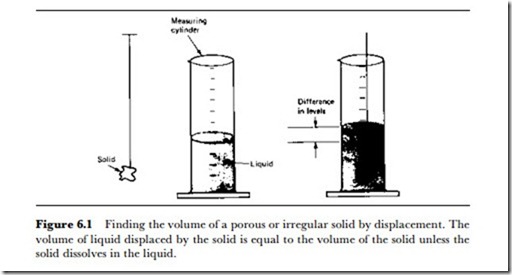Mass and volume
Of all the primary physical quantities, mass is the most difficult to define in terms that mean anything to a non-physicist. The official definition is that mass is the quantity of matter in an object, but this is not exactly a step forward in understanding. A more useful, although less fundamental, idea of mass is as the ratio of force to acceleration when a force is applied to a mass. The greater the mass of an object, the less acceleration a given force can produce. Two different masses placed on ice might be equally easy to move, but the larger mass requires more force to accelerate by the same amount.
In everyday life, subject to the almost constant acceleration of gravity, we make no distinction between mass and weight, but weight is a force that is the effect of gravity on a mass. The mass of an object is constant, but its weight on Earth is not quite so constant, because the size of the force of gravity varies slightly from one place to another. In deep space, where gravitation has very little effect, the weight of any object is almost zero, but the mass is unchanged and it determines the amount of acceleration that a force can produce. The traditional method of measuring mass, as distinct from weight, is the mass balance, in which an unknown mass is balanced against a set of masses of known values. Because gravity affects both sides of the scales, this is a comparison of masses rather than weights, although it is not effective if the gravity is zero.
Volume is much easier to define as the amount of space that an object takes up. Even this, however, can be deceptive. The volume of a slab of glass is easy to appreciate, but what is the volume of a porous material like a sponge? The volume of a solid non-porous material can be calculated from its dimensions, but for a porous material we have to measure volume by
finding what volume of liquid the object will displace (Figure 6.1). For a gas, the volume is the volume of the container because a gas has no fixed volume or shape.
